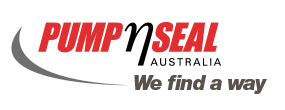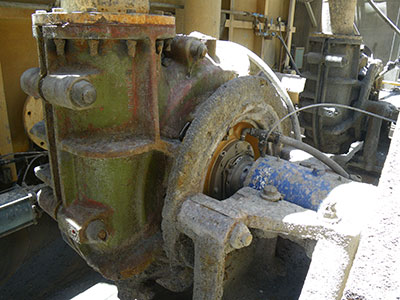Initial costs and life cycle costs affect which sealing method is chosen for an application. If a sealing device cannot be considered an investment or will not produce an immediate return, there is little incentive for a change or upgrade.
Environmental stewardship can also play a role in choosing a sealing method. States and provinces have instituted heavy mandates that strictly control water consumption and effluent discharge. In some industries, water controls the environment in which the sealing method operates and plays an important part in increasing seal reliability. With the added concern of water reduction mandates, usage fines and the potential negative impact on reliability process industries are faced with doing more with less.
Spending logically upfront, increasing reliability while lowering operational costs are a winning combination achieved with sealing knowledge and Best Available Techniques (BAT).
Best Available Techniques (BAT) Approach
The BAT approach is based on optimized economics and what makes sense for the user. It is dictated by equipment design, realistic seal life cycles, slurry characteristics and budget. Equipment with less than desirable sealing life cycles and the hard-to-seal equipment should be the area of focus. Sealing knowledge of when to use what technology i.e., mechanical packing or mechanical seals is critical to the BAT process. The sealing approach determined through BAT will optimize upfront costs while meeting expected life cycles.
The old 80/20 rule applies. A small population of the equipment can represent a large portion of the sealing costs associated with sealing bad actors or hard-to-seal equipment in slurry processes.
In the BAT evaluation process, the bad actors associated with a high cost of ownership are identified. This formal approach should include a survey identifying the equipment population, including the bad actors, and the goals to be achieved. BAT is assisted through root cause failure analysis and slurry classification studies. This process can be conducted throughout the plant or with a specific focus, i.e., a bank of pumps.
Slurry Classification
The term slurry by itself is not considered enough information for BAT recommendations. The properties of slurries and the tolerance to apply BAT vary for a process or industry.
Slurries can be classified as having Newtonian properties or non- Newtonian properties. A Newtonian fluid behaves like water. The flow characteristics are somewhat normal in that the fluid will have a viscosity similar to water. The ability of this fluid to settle out particles quickly and provide more free water for lubrication classifies it as “settling” slurry.
A non-Newtonian slurry is considered “non-settling.” The slurry properties are such that particles will not settle out easily and will tend to be a more homogeneous mixture of the fluid carrier and particles. The non-settling slurry will have less free water for lubrication and/or thermal dissipation properties.
Dewatering slurries have lower densities. A paper pulp application is a perfect example of slurry, which will collect at low flow, less turbulent areas closest to the seal gland where the sealing device resides. This dewatering effect will insulate sealing device or block the flow of water, thus supporting a dry run condition and generating excess heat.
Using the BAT Approach for Sealing Slurry Pumps
Most equipment in the slurry industries is large. It can be sealed with reliable, time efficient split sealing solutions that save money, production and labor hours. Split sealing can be economically justifiable when all life cycle costs are considered.
Today’s advanced sealing technologies include reliable high-performance split mechanical seals combined with environmental controllers, heavy duty, non-split, flushless cartridge seals or high-strength mechanical packing designed specifically for harsh abrasive slurry sealing.
The BAT approach to sealing considers the best sealing technologies, which contain slurry features inherent in their design increasing reliability, but also allows the reduction or elimination of flush water.
Spring Location
A mechanical seal design that places the springs entirely outside the seal will deliver higher performance levels. In slurry applications the slurry will migrate or precipitate across the seal faces. This is an uncontrollable event. Springs located entirely outside the seal (visible springs) will avoid the fouling that takes place internally and continue to deliver the closing force required to keep the faces tracking properly.
Sealing Surface Micropolishing
Micropolishing the dynamic o-ring surface is a process that improves the surface finish that the o-ring has to travel. The surface is manufactured to a mirror-like finish to reduce the friction between the o-ring and the dynamic sealing surface. Proper seal face tracking will continue over the life of the seal. Non-settling and dewatering type applications can insulate seal faces and increase the heat buildup. As a result, o-ring properties can be affected, limiting their sealing performance and introducing a problem with seal face hang-up.
Shrouded Seal Faces
In heavy slurry applications seal faces must be protected from possible impact of large solids, which can be as hard as rock. Seal face encapsulated in metal shrouds for protection is desirable.
Larger Clearances
Seal fouling on the both the process and atmospheric sides of the sea will occur. On the process side there are areas of low flow or low turbulence. It is here where the slurry can dewater and/or insulate the seal from the cooling effects of the process. As previously mentioned, fouling on the atmospheric side of the seal is an uncontrollable event.
Mechanical Packing
Mechanical packing designed for challenging abrasive slurry environments can meet expected life cycles. Historically, the perception has been that packing required flush water for cooling, lubrication and cleaning for reliable operation in slurry services. High tensile strength materials are used to withstand abrasion but often exhibit less than ideal heat generation, thermal conductivity and chemical resistance characteristics. Users typically use high flush water rates to minimize the negative impact of these characteristics of slurry packing. High performance slurry pump packing can reduce flush water use and increase reliability. Pump packing constructed with graphite and carbon has proven successful in difficult slurry services. High tensile strength carbon yarns provide the reinforcement necessary to resist wear and abrasion in slurries while graphite provides sealing and lubrication. The carbon/graphite construction delivers low heat generation with high thermal conductivity, requiring less water for cooling. This unique construction of yarns yields a packing that is easily removable during repack, resulting in reduced downtime. The ability to be used in a wide array of equipment, using advanced materials and construction practices, packing can lower flush water requirements and deliver greater life cycles. Packing can represent a reliable low cost alternative in the slurry markets.
Environmental Controllers
Environmental controllers are economical additions to mechanical seals and mechanical packing. Environmental controller bushings are designed to extend the life of sealing devices. They perform the function of expelling solids from a seal chamber using a spiral groove. As a result, less flush water is required to support a sealing method. In some instances, seal life cycles can be significantly increased and flush water completely eliminated. A number of environmental controller variations are available for the various sealing methods mentioned.
Dual seals are often used to increase seal life cycles in slurry applications. They can be a relatively high expense on upfront acquisition and utility cost. Dual seals offer the ability to pressurize a clean fluid, sometimes called barrier fluid, between two sets of seal faces. This arrangement is described as Plan 53 or Plan 54. Plan 53 uses a seal support tank to supply barrier fluid to the seal; Plan 54 uses an outside source, or flow through arrangement. In both, the pressure is set to a minimum of 15 psig (1 bar g) above the seal chamber pressure. This sealing approach ensures that a clean fluid is forced between the inboard set of seal faces, which would otherwise be the slurry in a single seal installation. Plan 54 can be an area for significant water reduction improvements since the flow through arrangement is associated with wasteful, high water flow rates to drain. Another area for savings is a means to reduce process dilution. Visibility to inboard seal leakage can be achieved with addition of a dual flowmeter. To evaluate the BAT opportunities at a plant, work with a single point supplier that is knowledgeable in all the sealing technologies mentioned. A supplier can deliver BAT, considering all of the following:
- Understand what equipment will benefit from BAT
- Know the slurry characteristics and the impact it has on the equipment
- Install split seals where a positive impact on labor hours and downtime can be achieved
- Use mechanical packing when the pros and cons rule out mechanical seals
- Specify heavy duty flushless slurry seals when flush is not available or unreliable
- Add environmental controllers to increase reliability and reduce flush
Written by: Christopher Little, A.W. Chesterton Company





